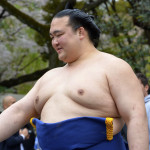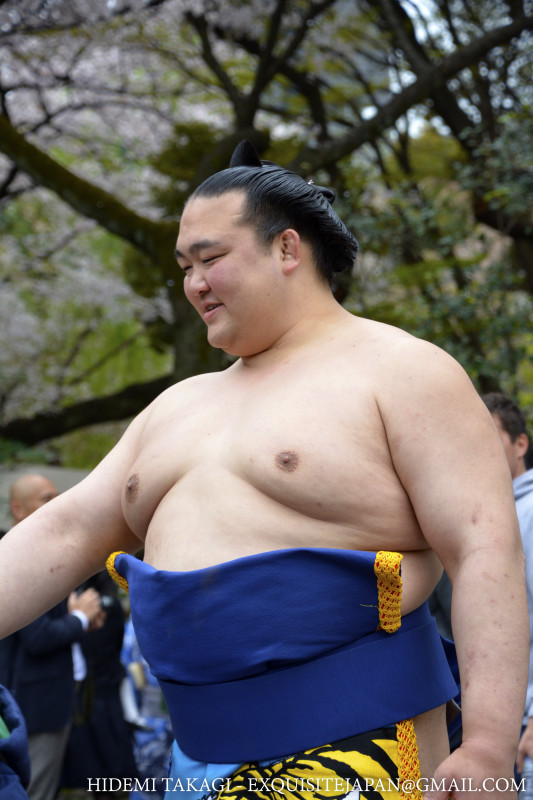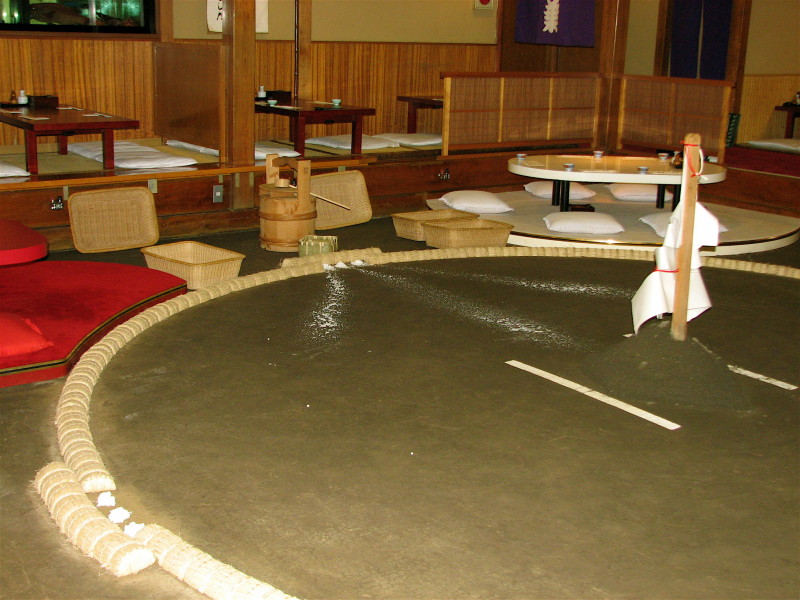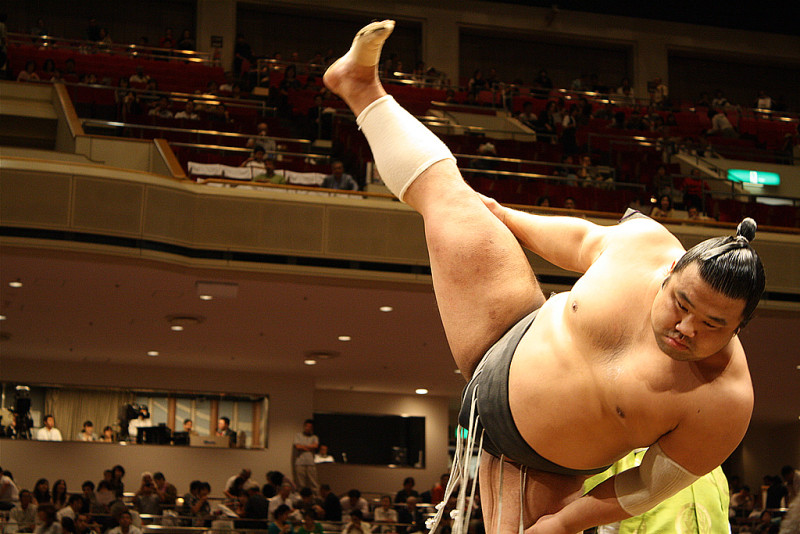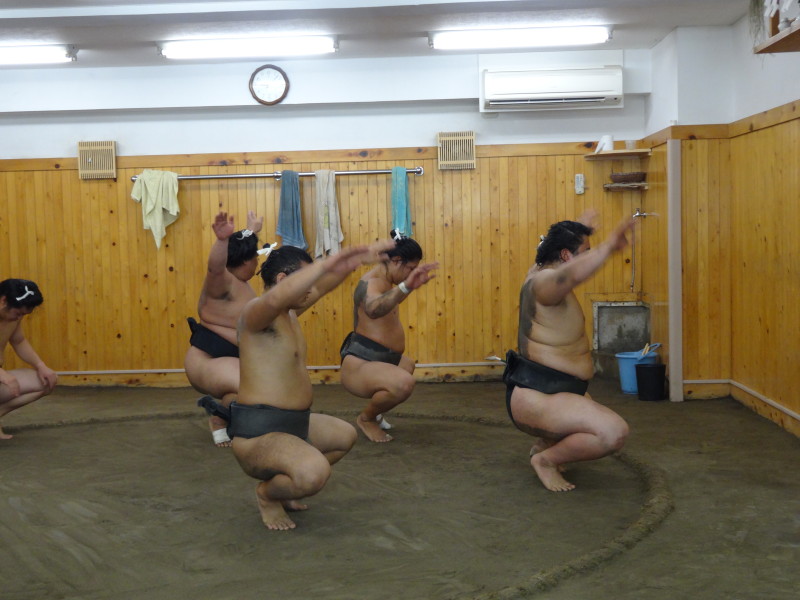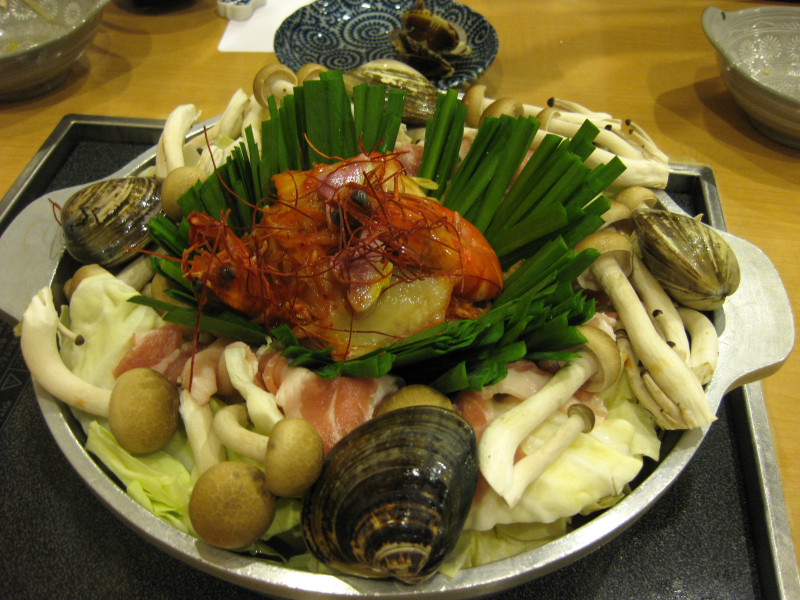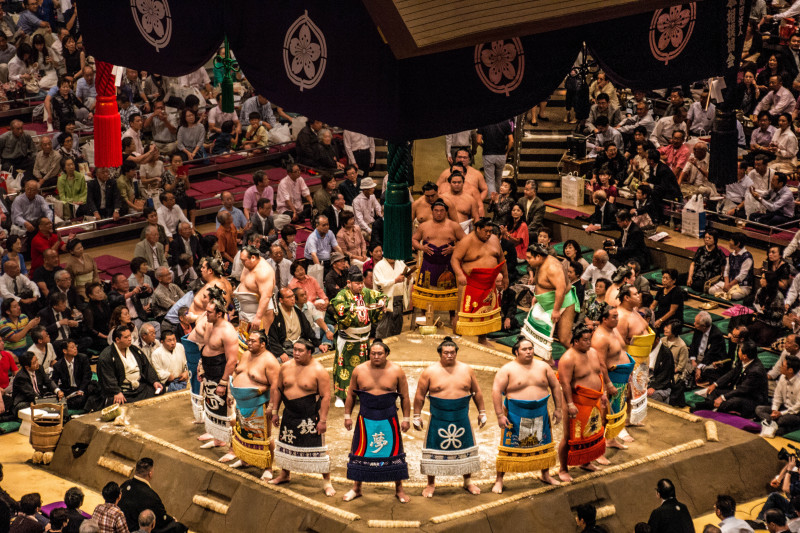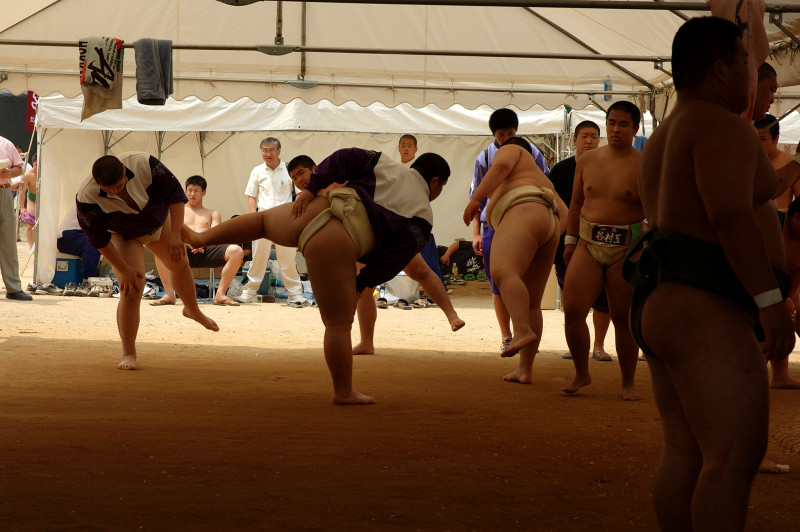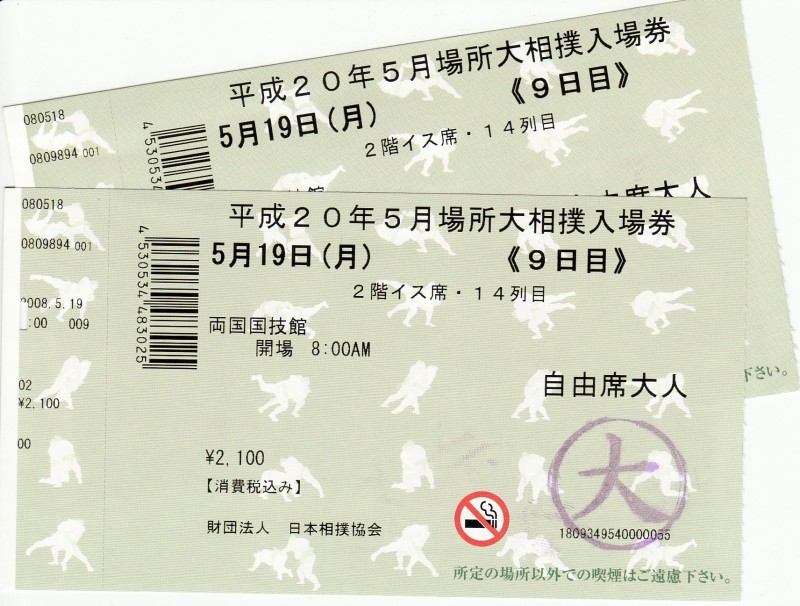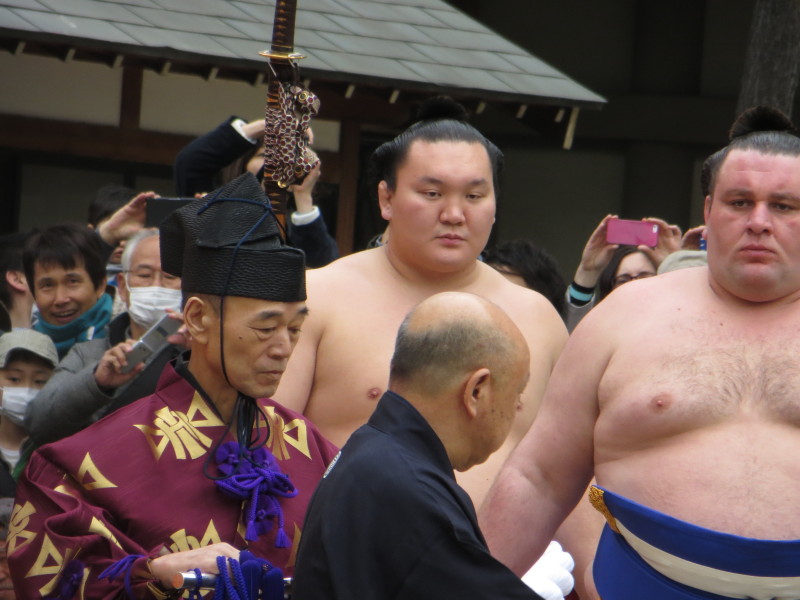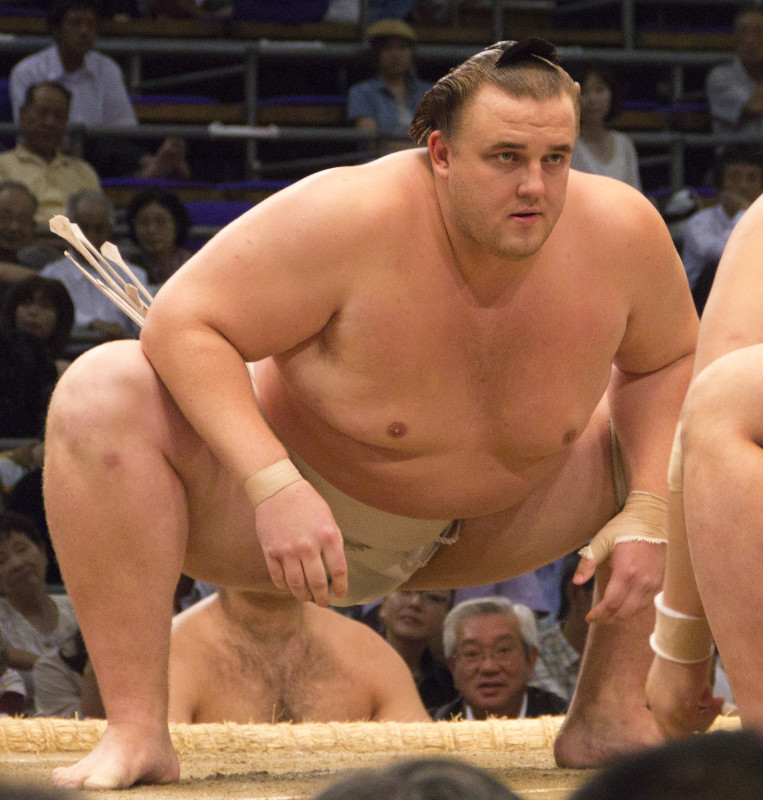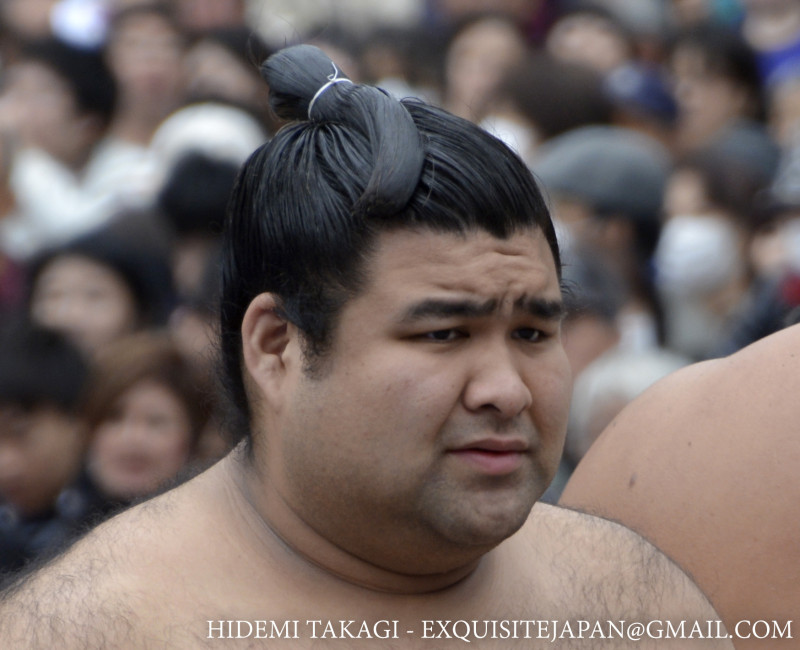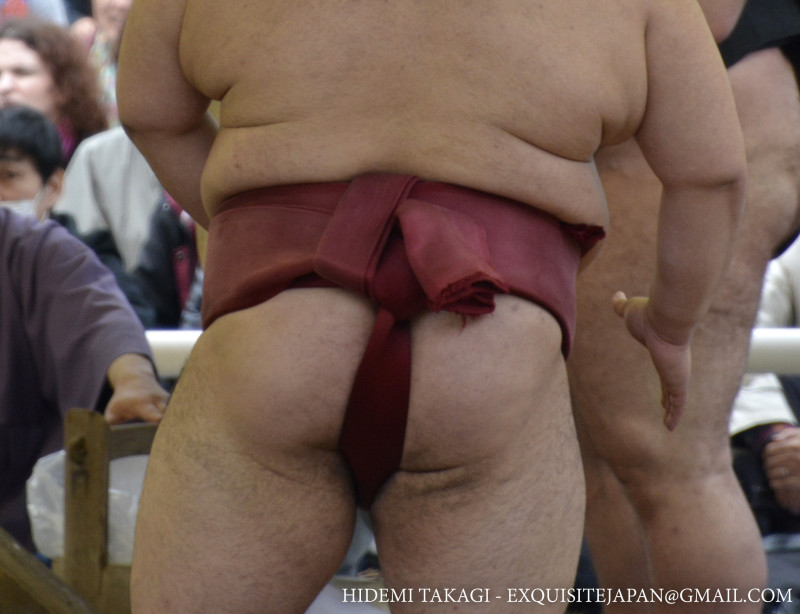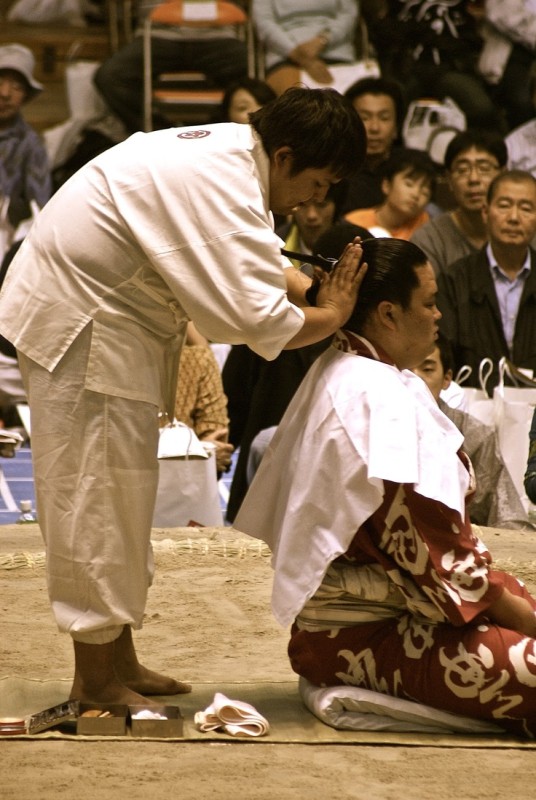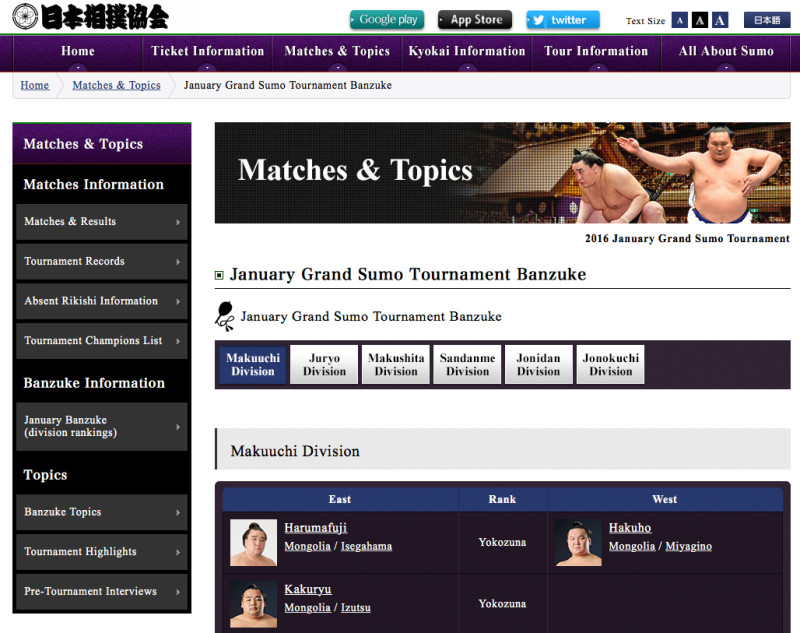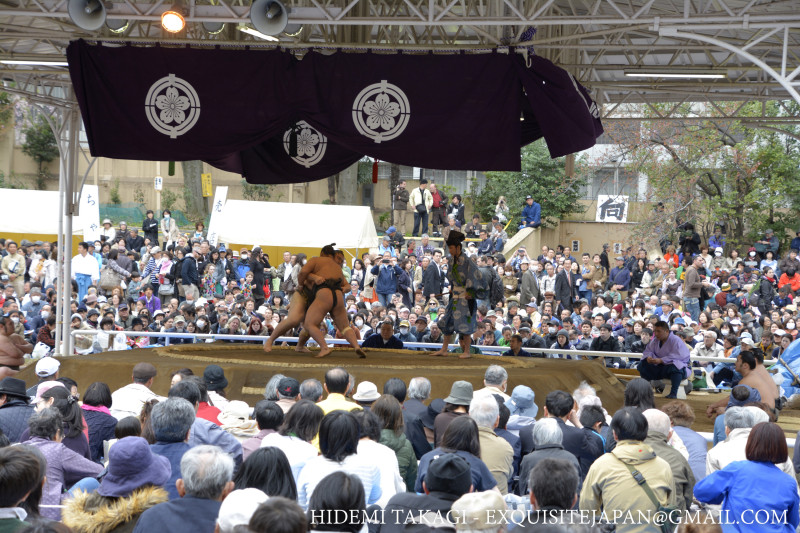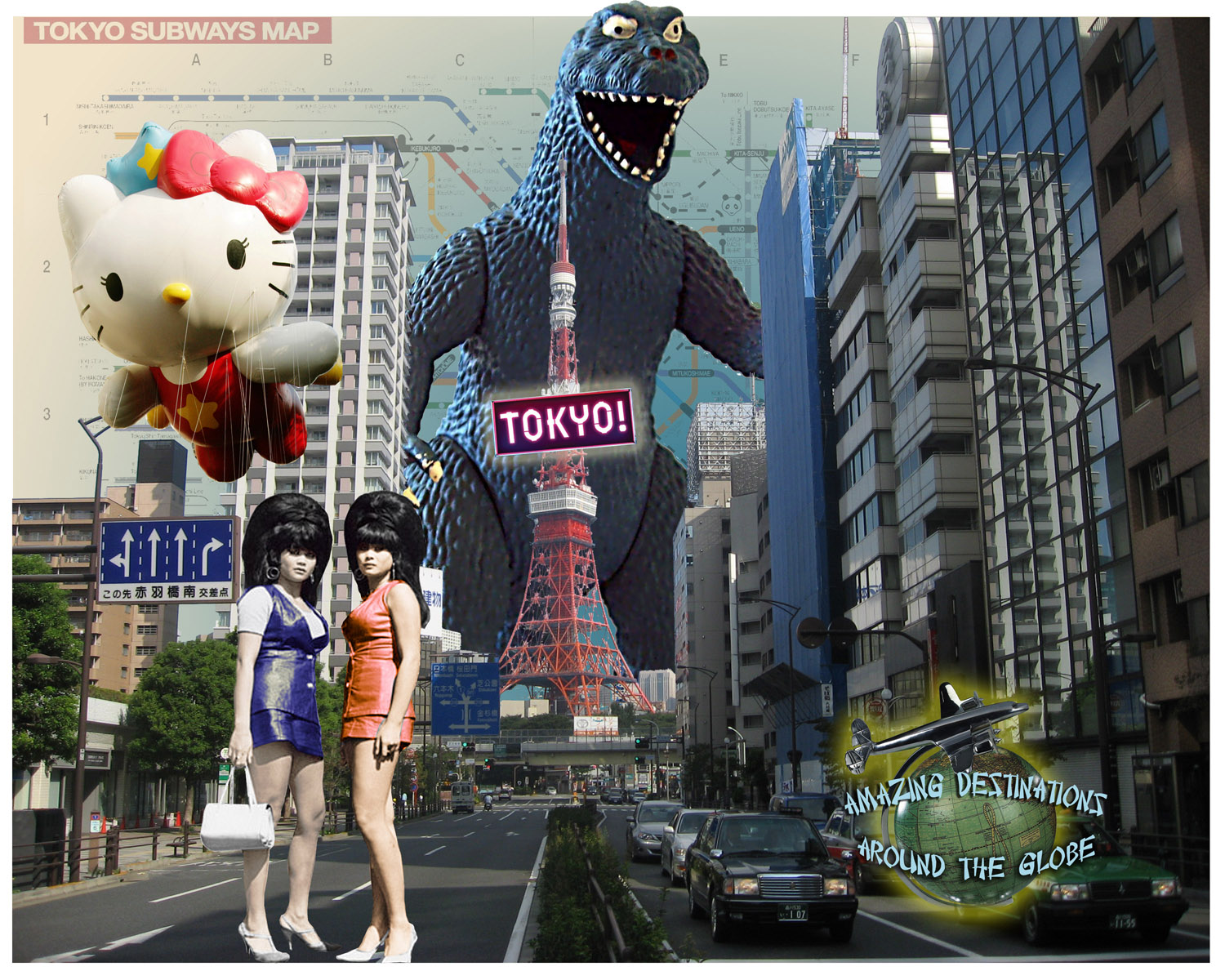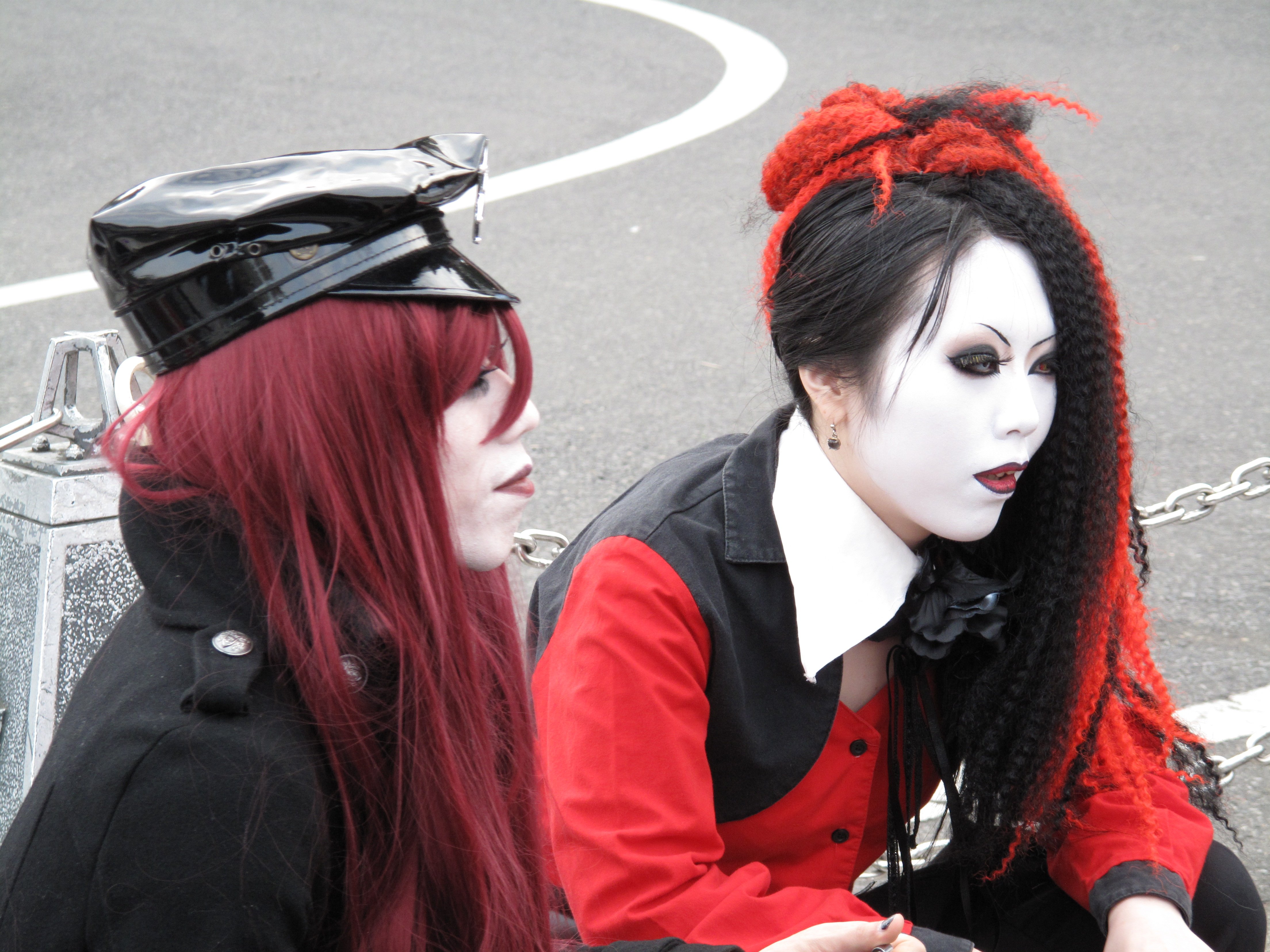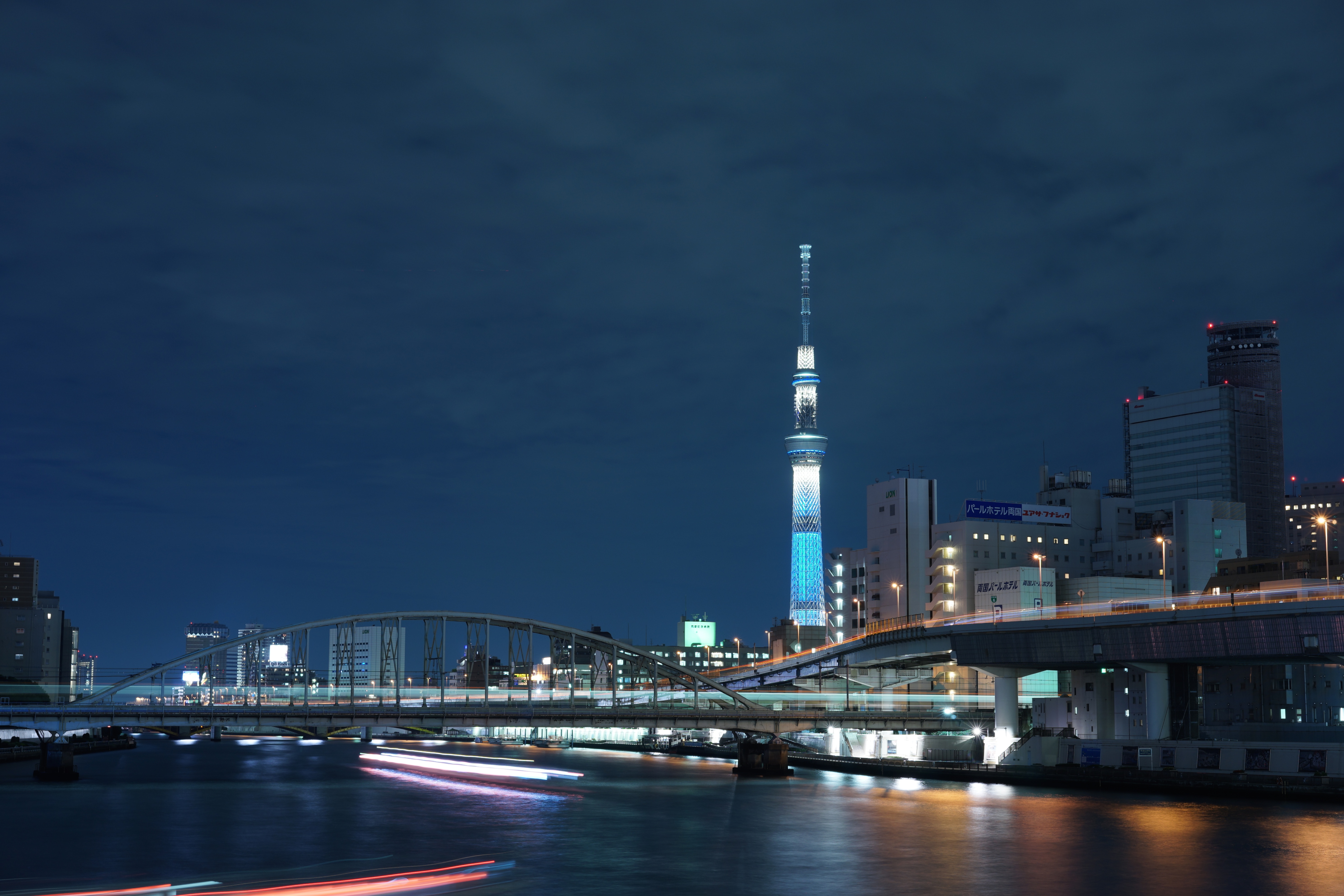In the past few years, Sumo – the Japanese ancient full-contact wrestling sport, has become very popular around the world and names such as Yokozuna Hakuho, Harumafuji, and Asashoryu become more familiar with foreigners both visiting Japan and watching Sumo abroad. The majestic battle of 150-200kg men in the small round clay ring become one of Japan most iconic images but behind the image of large men fighting in a ring, there is a lot of tradition and hard practice that not very many know about. This article will bring into light some of the most unique matters when it comes to Sumo wrestlers and their lifestyle in hope to get you familiarize with both the sport and the Rikishi (wrestlers) behind it. So lets get going!
1. What are the basic rules of the sport?
The bout starts when the Sumo wrestlers stand in front of each other and both wrestlers touch the ground with their hands. When the referee (Gyoji) gives the ok, the bout starts and the wrestlers are allowed to push, pull or try any wrestling maneuver to win the bout. The wrestlers are allowed to hit each other as long as their hands are open, but the goal is to push and pull rather then knock each other out. The wrestlers allowed to pull each other mawashi belts, but are not allowed to pull each other hair. Sumo wrestler wins a bout when any of the wrestlers manage to shove the other outside the ring boundary or when any of the fighters touch the ground with any part of their body or even the hair!
2. Whats behind the large size frame of the Sumo wrestlers?
Although Sumo wrestlers looks very fat, the image is quite misleading. Sumo wrestlers are extremely healthy and muscular. Under the massive layers of fat, the wrestler develops powerful muscular frame allowing them to lift extremely heavy weight, pull and push large objects and lift very heavy weights. The wrestler might look at first sight as fat but they are as fit and flexible as any slender muscular person and are exercising daily in both the gym and in practice bouts. Don’t let the exterior mislead you, they are well fit and healthy then most people!
3. How do Sumo wrestlers train?
Sumo wrestler have very strict training regime which allows them to become such powerful wrestlers. Sumo wrestlers wakes up very early in the morning to start their training before eating very light breakfast, they then spend the morning hours practicing and training at the gym. After lunch, the wrestlers are allowed to rest and let their bodies calm down from the morning exercise and then the routine continue with afternoon until late evening practice which is finished at dinner time. Sumo wrestler go through that very strict routine from very early childhood and continue the training until they retire. In some cases, there are Sumo wrestler who retire even after they are 40 years old!
4. How does the Sumo wrestler diet looks like?
Sumo wrestlers eats a lot! Their daily diet intake is about 20,000 calories per day. It is almost 10 times of what a person is eating on a daily healthy diet. The daily food is consumed in 2 massive 10,000 calories meals at lunch and at dinner with a very light breakfast to maintain energy level for the morning training. The most famous Sumo wrestler food is the Chanko-nabe. Chanko-nabe is a stew of fresh veggies, tofu, fish and either pork, chicken or beef. There are many restaurants around Japan which serves Chanko-nabe but Sumo wrestlers usually cook their own nabe in their living quarters at the stable when the young wrestlers prepare the food for the higher ranking wrestlers and also serve the food according to the ranks.
5. How many competitions do Sumo wrestlers fight every year?
Sumo wrestlers have a very busy yearly tournament schedule. Every other month starting in January, there is a two weeks long tournament that travels from city to city around Japan. The January tournament starts in Tokyo, then moves in March to Osaka, return to Tokyo in May and then again moves out to Nagano for the July tournament. In September the tournament goes back to Tokyo and the last tournament of the year, the November tournament, is held in Fukuoka. The wrestlers have pretty much a full month to recover from each tournament and then two weeks to get ready for the next one. Taking that many wrestlers suffer different kind of injuries while both training or competing, such schedule do not leave much room for recovery from injuries and that is the main reason you see wrestlers missing from tournament throughout the year.
6. Is it possible to meet Sumo wrestlers in Japan?
Yes, it is possible to get up close and meet Sumo wrestlers face to face. If you are interested to see how Sumo wrestler train and even meet them simply find the nearest Sumo stable to where you are staying and go there around lunch time or early morning. Most stables will have open spaces where you can see the wrestlers practice and can even take photos. If you do want to meet the wrestlers in person, inquire with the stable management and find out if they will allow you in. Be polite, this is a serious place where the wrestler spend their life in. Consider your request the same as asking someone to come into their private home. If you are polite and the timing is good, you might get lucky and be allowed in!
7. How can you get a ticket to a Sumo fight and how much it cost?
The price of a Sumo tournament ticket is depends on the place you sit. The closer you are to the ring, the more pricey the tickets are. A basic arena ticket cost about ¥4,000 yen while a basic box seat (the seats right off the ring) starts at about ¥40,000. Those are just the basic costs, the closer you are in the arena to the center ring and the closer you are sitting in the special box seats, the higher the price is. When budgeting a Sumo tournament tickets, consider also that the event will go for about 3-4 hours and you will need to buy food and drinks inside the arena. You can mainly buy bento meals, snack and drinks. Smoking is not allowed inside the arena but alcohol is allowed, so if you are in a good mood for partying, go right ahead!
8. What are the ranks of Sumo wrestler means?
As in any full contact sports, Sumo has its own ranking system. The lowest ranking are Jonokuchi, Jonidan and Sandanme. Those are the very lower ranking of the Sumo wrestling beginners and youngsters. As the wrestlers start to get into professional Sumo level the ranking system continues up with Makushita, then Juryo. Once Sumo wrestlers pass Juryo level they join the highest level of professional Sumo called Makuuchi. The ranking system is not permanent ranking. Wrestlers needs to win at least 8 bouts out of 14 to stay in their rank or move up forward to the next one. Wrestlers who fail to perform will fall in ranks and will go back to Juryo tournament level. The highest ranking in Makuuchi tournament are the Maegashira, Komusubi, Sekiwake, Ozeki, and last and highest Sumo ranking is the Yokozuna. In 2015 to 2016 season, the Sumo association had 3 Yokozuna ranked wrestlers!
9. Are all Sumo wrestlers Japanese?
Not at all. Although Sumo is a Japanese traditional sports, there are many foreigners wrestlers who came to Japan at young age and joined the sports. Leading the foreigners list is wrestlers from Mongolia. In fact, the Mongolian wrestlers hold the top Yokozuna ranking for many years now and only this year, in 2016, a Japanese wrestler name Kotoshogiku was the first Japanese wrestler in 10 years to win a tournament. The Mongolian wrestlers simply rule the sports for the past 20 years. Together with the mainly Mongolian foreign wrestlers, there are also Russians, Georgians, Bulgarian, Hawaiian, Chinese and even Egyptian wrestler!
10. How do Sumo wrestlers make their hair?
As in anything else in Sumo, tradition is playing a big part of any aspect of Sumo wrestler life, and thats include the hair. The Sumo wrestler wears a form of very traditional haircut called “Chonmage” or “mage” in short. This haircut is mainly associated with the Edo period in Japan and the culture of Samurai. Back in ancient Japan, Samurai used to grow their hair very long, oil it and tie it into a small ponytail folded onto the top of the head in a special topknot style. In modern Japan, it is only Sumo wrestlers who actually grow and hold their hair in this ancient form. Before every bout, each Sumo wrestler is treated by a special hairdresser who specialized in Chonmage haircut. The hair is such an important symbol in Sumo and when a wrestler is retiring, they go through a hair cutting ceremony!
11. What does Sumo wrestler wear when they train and fight?
In Sumo bout as well as in training, Sumo wrestlers wears a special belt called “Mawashi”. The Mawashi has a fancy version of it called Kesho-Mawashi which higher ranking Sumo wrestler wears in the ceremony before a tournament or in special events. The Mawashi is made of silk and comes in many colors. The colors are usually associated with the stable the wrestler comes from or a color which the wrestler likes to associate with. The Mawashi is actually a 9 meters long piece of silk fabric and weigh about 5kg. The Mawashi is first unwrapped and then wrapped back several times around the Sumo wrestler body and then tied in a special knot. The Mawashi is also decorated with silk fronds hanging from the front. It is common to see those fronds fall off in the middle of the fight and then removed by the Gyoji quickly.
12. What happens after Sumo wrestler quit the sport?
Sumo wrestler quit the sports at different stages of their life. In most cases, Sumo wrestler will quit only if he can not continue fight due to health issues or if his level of Sumo is in constant decline and it feels like the right time to quit before they will move back in ranks. Yet, some Sumo wrestler keep wrestling until they simply too old to continue. There are quite a few Sumo wrestler who continue wrestling beyond their 40’s. When the time comes, regardless of the reason, a Sumo wrestler will go through the hair cutting ceremony in which the top of his hair knot will be cut and he will officially be done with his professional career as a wrestler. In many cases, the wrestler will turn to become a stable master and start teaching younger wrestlers in his own stable.
13. Where can you find more information about the next Sumo fights
The easiest way to learn about the upcoming Sumo event is use the Japan Sumo Association website which has an excellent English section. (http://www.sumo.or.jp/en/). The site offers general information about Sumo, interviews with wrestlers and very extensive sections displaying past and current wrestlers statistics, tournaments results, and upcoming tournaments information. The site is also offering an online system to purchase tickets and is very easy to use. In the past year, the site also release a free smartphone application called Nihon Kyokai Grand Sumo. The application is in English and offers valuable information about Sumo, wrestlers, and past tournaments statistics. To get the smartphone app please use the following link: http://www.sumo.or.jp/en/kyokai/information?id=74
14. Is there any international Sumo competitions?
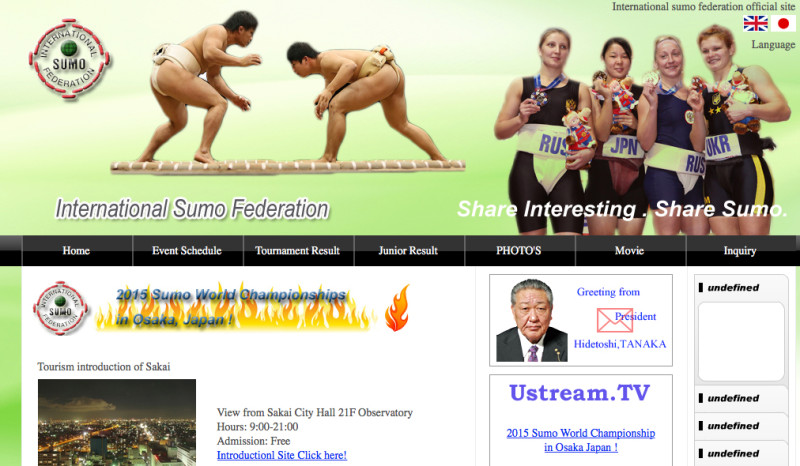
Source: International Sumo Federation
Yes, indeed Sumo is slowly but surely expand outward and now you can find international Sumo tournaments and leagues in many countries. One of the main global forces behind international Sumo is the International Sumo Federation. (http://www.ifs-sumo.org/). Simply log into their website to find out about international events schedule. The federation organize events in China, Mongolia, Taiwan, Peru, Poland and the USA. The site also offers past statistics about international Sumo wrestlers, as well as event movies and photos. Be sure to check this site to find out if any of the events will be run in a city near you!
15. Is there any free Sumo competitions in Japan?
Yes, there are many small free Sumo tournaments around Japan throughout the year but the most famous one is taking place in Yasukuni Shrine in Tokyo at the Cerry Blossom Festival the shrine hold every year at the end of March or early April. The Yasukuni Shrine tournament is called Honozumo and is held at the shrine Sumo ring which is used only once a year especially for this event. The place can hold up to 4,000 spectator and is free of charge. You will need to get early though as it is one of the most popular events at the shrine and people are lining up from very early morning to get a good spot and enjoy the daily bouts. Honozumo starts with traditional Shinto ceremony to bless the ring and the first couple of hours the ring is filled by young Sumo wrestlers who fight each other with a touch of a comic show. The Sumo wrestlers are also making themselves available to take photos with spectators and give signatures to kids and fans. The event highlight starts around 3pm when the top ranking wrestlers perform a Shinto ritual at the main shrine building to bless the new season and then a full tournament starts and finalized with the top Yokozuna bouts. If you are in Tokyo at the Cherry Blossom period, make sure not to miss the Honozumo tournament!
Have a good trip and travel!
